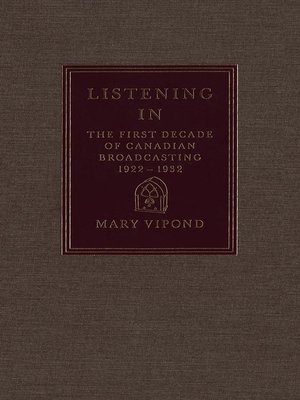
Sign up to save your library
With an OverDrive account, you can save your favorite libraries for at-a-glance information about availability. Find out more about OverDrive accounts.
Find this title in Libby, the library reading app by OverDrive.



Search for a digital library with this title
Title found at these libraries:
| Library Name | Distance |
|---|---|
| Loading... |
Mary Vipond's approach is based on the idea that the development of radio broadcasting was a process that involved equipment manufacturers, broadcasters, and "audiences/customers." She charts the expansion of these three groups, surveys the development of advertising and networking as methods of financing, and analyses the evolution of programming. From 1922 to 1932, radio administration was the responsibility of the Radio Branch of the federal Department of Marine and Fisheries. Vipond discusses the regulatory policies of the branch. She completes her study with an analysis of the period from the formation of the Aird Royal Commission on Radio Broadcasting in 1928 to the passage of the Radio Broadcasting Act of 1932. Between 1922 and 1932, virtually all Canadian broadcasting was in the private sector. The campaign in the early 1930s to institute a broadcasting system oriented more toward public service and the promotion of a national identity was partially successful. Vipond reveals, however, that the act that in 1932 set up the Canadian Radio Broadcasting Commission, now the CBC, was much weaker than has generally been recognized. She argues that this weakness was a consequence of the fact that, over the course of the 1920s, broadcasters, listeners, and politicians alike had built up certain expectations of radio which could not easily be disregarded.







